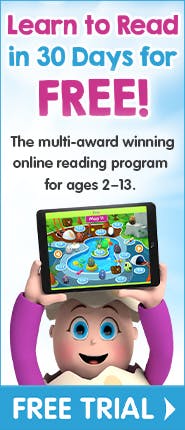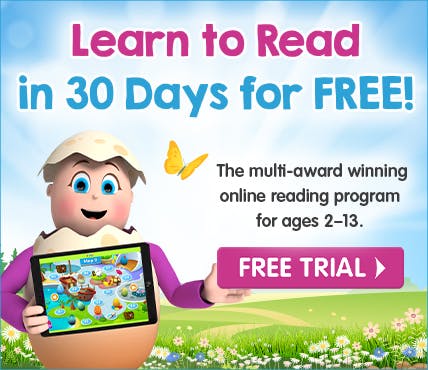


How Kids Learn to Read

The success of a child’s early reading development has been proven as an essential factor in their later academic life, therefore its important that kids learn to read through a systematic process that addresses the core areas of literacy.
As part of this process, motivation plays a key role – the more enjoyable the learning experience, the more effectively kids will learn to read. By associating reading with fun, kids are more likely to be enthusiastic and look forward to reading, and instilling this sense of enjoyment in their early learning experiences will help them develop a positive attitude to both reading and learning that will shape their approach to future education.
As highlighted by the National Reading Panel’s report (2000), a US study widely recognized for setting out the fundamental principles of early reading instruction, in order for kids to learn to read they must understand five essential areas of effective reading instruction:
Phonemic awareness – the ability to hear, identify and manipulate the individual units of sounds, known as phonemes, in spoken words.
Phonics – how letters are linked to sounds (phonemes).
Fluency – to read text quickly and accurately.
Vocabulary – learning new words in context and understanding their meaning.
Comprehension – the ultimate goal of reading, comprehension is the ability to understand, remember and communicate with others what has been read.
Reading Eggs incorporates these five fundamental elements of early literacy development, providing scientifically based reading activities with highly motivational elements. As an example, Lesson One of Reading Eggs beings by introducing the letter m, placing a strong focus on the phonic skill of recognizing that the written letter makes a particular sound, as well as the phonemic awareness skill of being able to hear the sound as part of spoken words.
The lesson features a highly engaging animation of Sam the Ant, who introduces a number of interactive activities to reinforce the letter’s sound and shape, asking the student to listen for the sound in words. A memorable song about the letter helps children remember the sound of the letter, adding to the sense of fun.
The lesson continues with a variety of activities focusing on letter formation in writing, vocabulary development and reading comprehension. Students are asked to complete a dot-to-dot to make the letter m. The letter’s lower case and upper case forms are introduced. The lesson then displays and reinforces words starting with m, before introducing them to the e-book, which is read aloud to the student, the voice acting as a model for their own fluent reading of text. Once the lesson has been completed, the student is rewarded with a hatching egg, as well as Golden Eggs that can be saved or spent on other games throughout the programme.
Testimonials
Reading Eggs has simply taken off in our school! It allows students to work at their own level and provides students at the lower end of the scale with the opportunity to gain success. The kids love the games, stories and different challenges!
- Claire Badrock, Meekatharra School of the Air
Reading Eggs is wonderful for early and beginning readers. It’s very easy to operate and the children get to be independent learners at an early stage. They love to share their progress as they sit side-by-side in the computer lab, proud of their individual achievements. I highly recommend it to all teachers in other schools.
- Jenny Dyer, Mount Pleasant Primary


